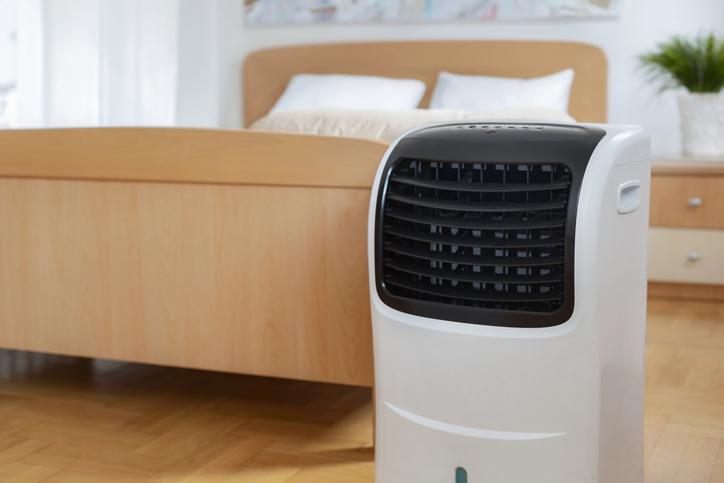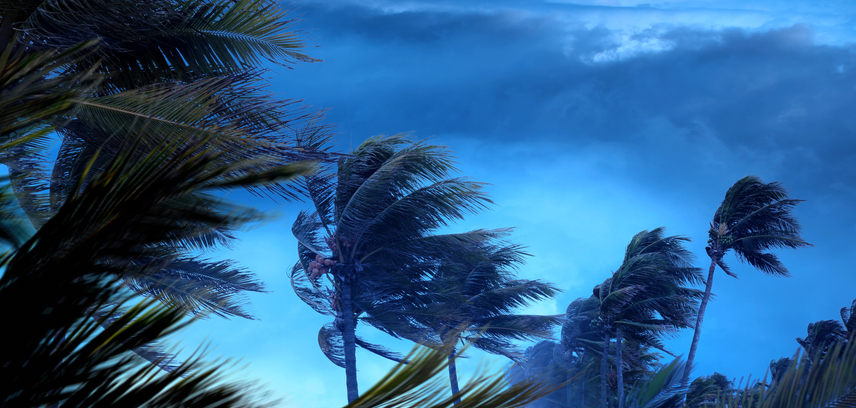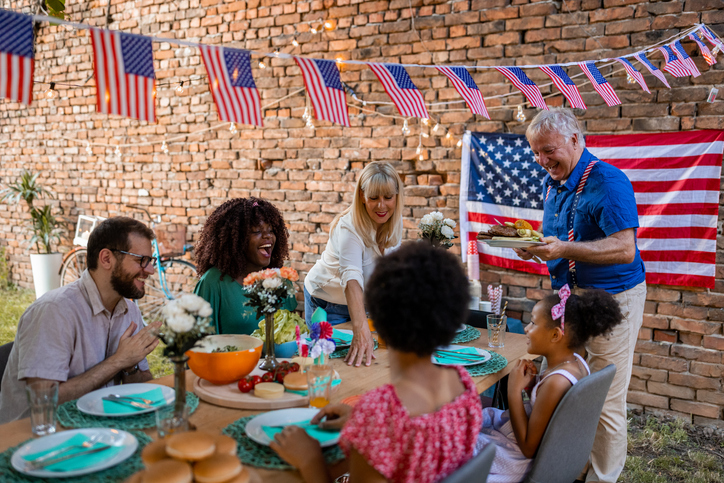
What is on your Independence Day menu this year? Of course, you can go with the traditional hot dogs and hamburgers, cooked on an outdoor grill. Holidays have a way of triggering cravings for those familiar favorites. But maybe this is the year you try something different, a new dish, or a twist on the traditional.
So where should a home cook look for inspiration? Stepping outside of the July 4th barbecue box and exploring new culinary landscapes can be intimidating, and it helps to have a little guidance. We caught up with Chef TJ Delle Donne, assistant dean and associate instructor for the Johnson & Wales College of Food Innovation & Technology, for some advice. Delle Donne has cooked on some big stages, including serving as chef de cuisine at the 90th birthday celebrations of both former President George H.W. Bush and former First Lady Barbara Bush. He shared his thoughts on how you can prepare and try some new cultural flavors this Independence Day.
Get inspired
New culinary adventures aren’t just for professional chefs. If you are looking to explore new and unfamiliar cuisines, solid research and development is the key, Delle Donne says. That’s available to everyone. “Take out a cookbook you haven’t seen in a while. Blow the dust off, look inside and see if you get inspired,” he says. Is it time to recreate the incredible meal you had on vacation? “A lot of times, it’s putting something you had—maybe Korean street tacos you had on a trip out West. Go down the rabbit hole on a Google search and see what inspires you.”
Sometimes you can find inspiration in your own family. And food may be the best way to connect with a new culture “That’s the beauty of this country—we’re a cultural mosaic,” Delle Donne says. “Sometimes, you can find it in your circle. You have to be inquisitive and open your mind a little. If it is not your family, it might be your colleagues, your friends. Say ‘Tell me about how your family ate in Ghana, or Turks and Caicos. Tell me about your Mexican heritage, your Canadian heritage.’” Or the cultural inspiration may be closer to home. “If they’re from Kentucky, they must have a macaroni-and-cheese recipe in their repertoire. Everyone wants to introduce you to their culture through food. It’s an international language.”
While the flavors may be new, you likely will recognize the cooking techniques – and the appliances – that you’ll use to bring the dishes to life.
“Grilling in Japan is the same as grilling in Kentucky,” Delle Donne says. “Roasting in France is the same as roasting in Virginia. Don’t be intimidated by braising, roasting, sauteing, grilling, broiling. It’s the same technique. It’s just the pantry that changes.”
And you might be surprised by the similarities to your regular menu, even on the Fourth of July. “If you go to England or Ireland, those ingredients look a lot like our ingredients—potatoes, sausage. The hot dog is obviously from the migration of the Polish and German population.”
If you are looking for quick inspiration, Delle Donne had a few suggestions on some that might be a good fit for an Independence Day feast:
Elote salad: Instead of eating traditional corn on the cob, take it off the cob for a twist on grilled Mexican street corn.

Shawarma station: This involves marinating, grilling and slicing. Line up the flatbreads and toppings and have people build their own.

Ramen bar: Put the hot broth in a coffee percolator, then make a station with noodles, hardboiled eggs, mushroom, seaweed and other ingredients.

 Hot dog variations: “Every culture does ground meat in a casing,” Delle Donne says. “Maybe do kielbasa, or bratwurst, or knackwurst.”
Hot dog variations: “Every culture does ground meat in a casing,” Delle Donne says. “Maybe do kielbasa, or bratwurst, or knackwurst.”
Build-your-own pizza: This might work best with an indoor pizza oven. “This is always fun for the kids. Neapolitan-style pizzas is a cool way to get some Italian flair into the Fourth of July,” Delle Donne says.

Others that might hit the spot on the Fourth are birria (Mexican beef stew), tandoori chicken or braised beef tacos.
Once you have chosen your menu, it’s time to collect the ingredients. “Highlight or pull out any ingredients that you might not be able to get at your local grocery store and see where you can find them. “Is it a Latin or Korean grocery store? See where you can find them and have fun with the whole process. Cooking is an art form that should alleviate stress.”
Appliances for the “cook-in”
While the Fourth of July is synonymous with outdoor cooking, the kitchen offers plenty of advantages. Home cooks sometimes don’t use tools like a broiler, Delle Donne says. “They use it to store pots and pans and don’t realize it can give you flame-broiled food. It’s a fantastic resource for cooking indoors.” If you are trying new dishes, it is important to use the right tools. “If you’re making tandoori chicken and it calls for a clay pot, get a clay pot. That’s how you get the most authentic flavor profiles,” Delle Donne says. Don’t be afraid of deep frying, either. “Deep fryers are safe and they’re fun. A lot of people who want a frite, or a French fry, or a tot, they try to bake them, and it doesn’t come out the way they expect. Deep frying is a technique, and it’s the best for crispy food.”
Make ventilation a priority

You don’t have to worry about ventilation when cooking outside. If you are cooking inside and you have a ventilation hood, turn it on. Ventilation is an important and sometimes overlooked aspect of the cooking process. It is the solution to manage cooking byproducts like smoke, steam and grease.
“Ventilation is probably one of the most important parts of cooking,” Delle Donne says. “If I were building a kitchen in my home, in a school, in a restaurant, it’s one of the first things I would think about. Any food is full of water or fat, and that creates steam or smoke. It’s going to happen.”
Ventilation is also the best way to manage cooking-related odors and improve indoor air quality. “You don’t want to breathe in any smoke or grease particles. Getting it out of your house is paramount. Turn the hood on.” Don’t worry, you still have many good options for improving ventilation while cooking, even if you don’t have a ventilation hood.






 Summer comes with the threat of hurricanes and other serious storms. It is important to have a plan in place to keep your food safe to eat should your home lose power. Follow these tips from the USDA to prepare before the storm hits:
Summer comes with the threat of hurricanes and other serious storms. It is important to have a plan in place to keep your food safe to eat should your home lose power. Follow these tips from the USDA to prepare before the storm hits:







